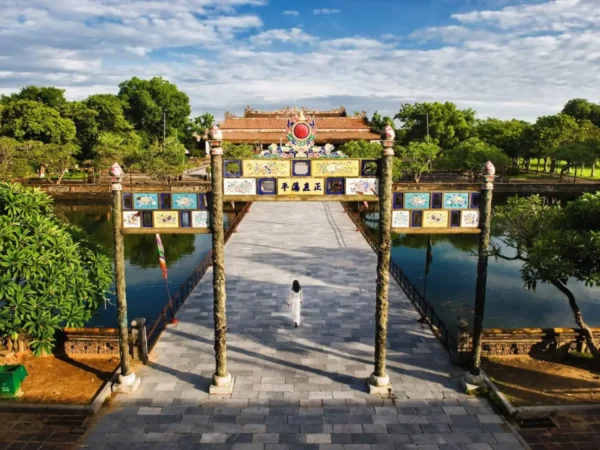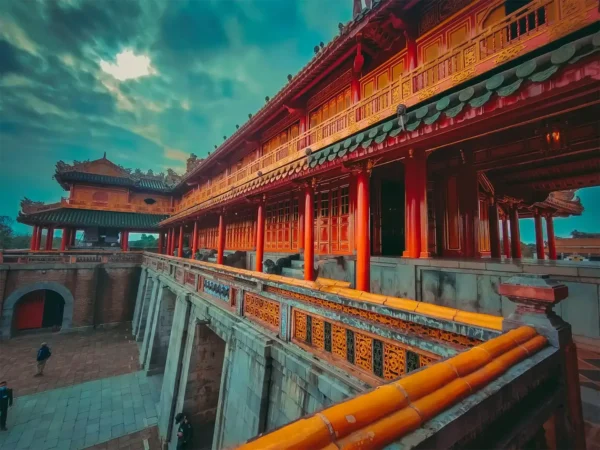Thien Mu Pagoda Showcases Awe-Inspiring Sacred Beauty
Thien Mu Pagoda is a very old and famous place in Hue, Vietnam. Many people come here, but some still don’t know its real story. Are you curious about why it’s so special? Do you want to know what makes it more than just a nice photo spot? This pagoda holds many secrets, legends, and beautiful views. If you feel like you’re missing something during your trip, don’t worry – this Sapa Nomad‘s article will help you learn more and enjoy it fully.
Overview of Thien Mu Pagoda
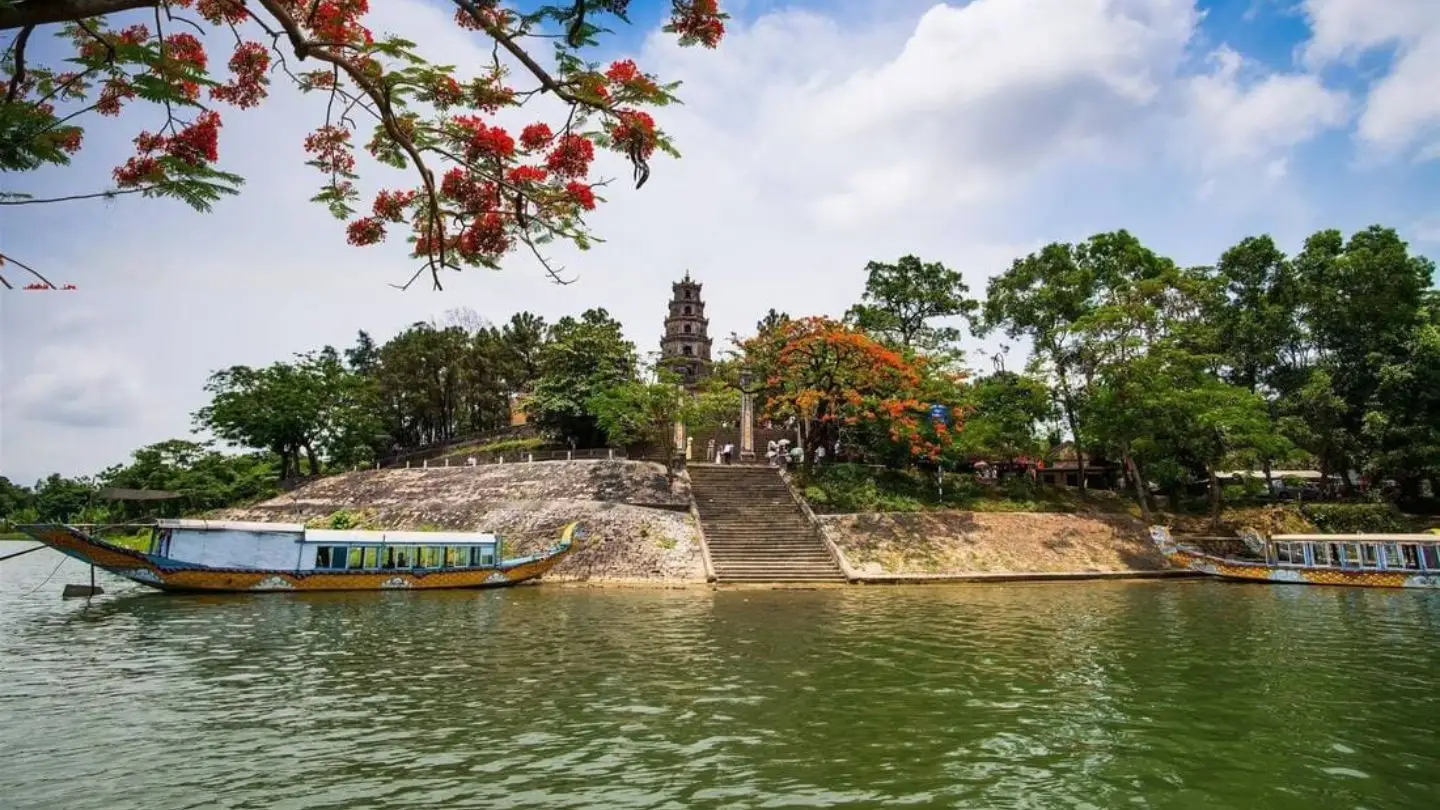
- Location: Huong Long village, North bank of Perfume River – 5 km from Hue city center
- Opening hours: 8:00 AM – 6:00 PM
- Entrance fee: Free
If you ever find yourself in Hue, you can’t miss Thien Mu Pagoda – it’s one of the city’s most beloved landmarks. Sitting peacefully by the Perfume River, this historic temple was built way back in 1601. It’s not just beautiful, but also full of stories, legends, and spiritual meaning. The iconic Phuoc Duyen Tower makes it easy to spot – and even easier to fall in love with.
Wanna make your trip easier? Check out our Hue Day Tour from Da Nang – super affordable and totally worth it! You’ll get to visit not just Thien Mu Pagoda, but also the Hue Imperial City and Khai Dinh Tomb, all in one day. And don’t worry about missing a thing – we’ve got an English-speaking guide to walk you through every highlight. Let us take care of the plan so you can just enjoy Hue!
🚗 How to Get to Thien Mu Pagoda
🚴♀️ Bicycle:
If you enjoy a slow, scenic ride, cycling is a fun option! Just make sure to go early in the morning to avoid the midday heat and traffic.
🏍️ Motorbike rental:
Want to explore on your own schedule? Rent a motorbike for around $4–6 USD per day. From the Imperial City, follow Kim Long Street and ride for about 2km to reach the pagoda.
🛶 Dragon boat on the Perfume River:
This is a relaxing and unique way to reach the pagoda. A 30-minute boat ride lets you enjoy the breeze and peaceful riverside views.
🚲 Cyclo (three-wheel bicycle taxi):
Taking a cyclo is a charming, local experience. You’ll get to admire the scenery and hear stories about Hue from your driver. Prices usually range from $1.50–4 USD per trip, depending on the distance.
🚕 Taxi:
This is the fastest and most convenient way—especially if you’re traveling in a group. A 10 to 15-minute ride from downtown Hue takes you right to the pagoda’s entrance.
Origin of The Name Thien Mu Pagoda
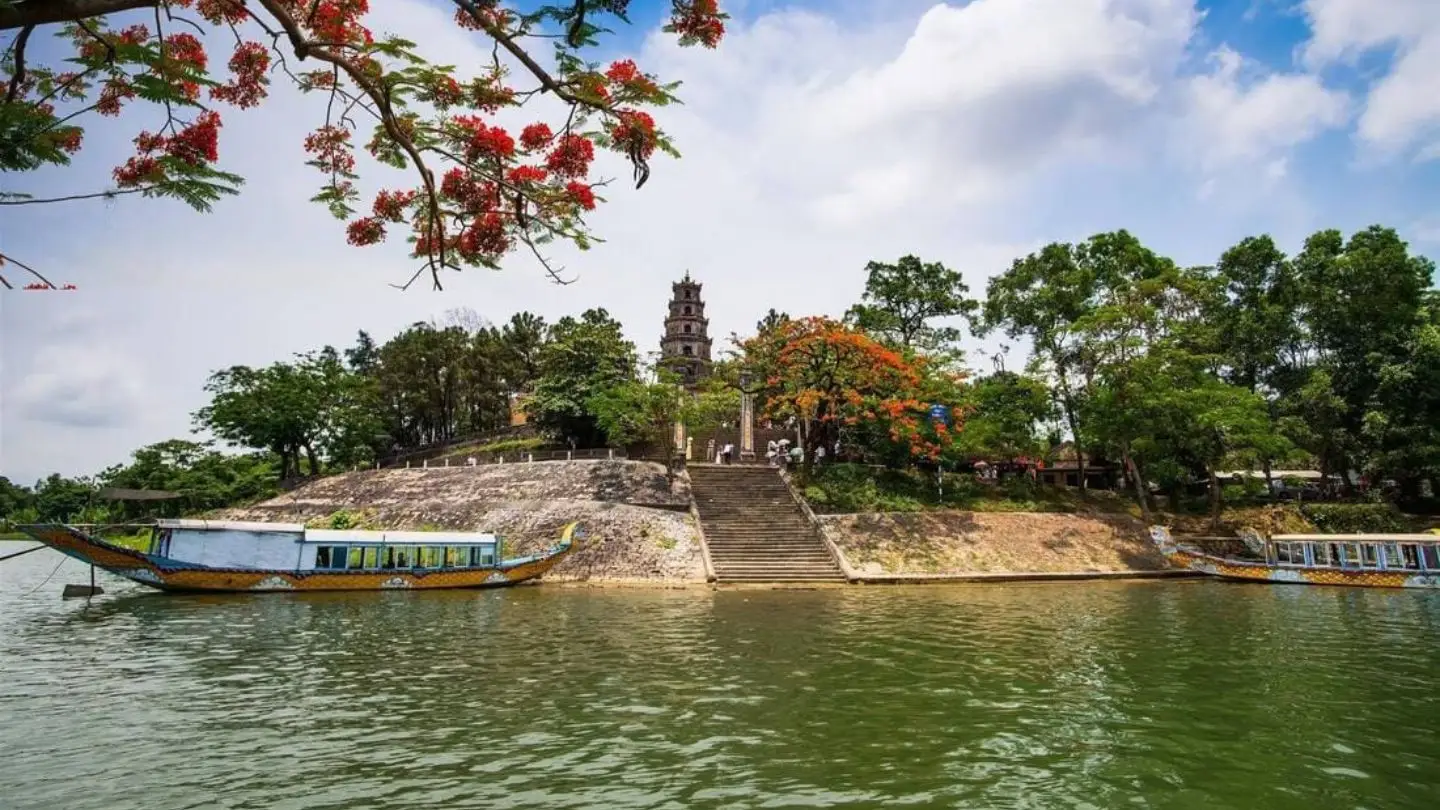
The name Thien Mu Pagoda actually comes from a really interesting old legend. A long time ago, people in Hue saw an old woman appear on a hill by the Perfume River. She said a great lord would come and build a temple there to bring peace and strength to the land.
Later, Lord Nguyen Hoang heard the story and believed it. He built the pagoda in 1601 and named it Thien Mu, meaning “Heavenly Lady.” Thanks to that mysterious tale, the pagoda still attracts tons of curious visitors who want to see the place for themselves.
Historical Role of Thien Mu Pagoda
Back in the summer of 1963, Thien Mu Pagoda wasn’t just a peaceful spot – it became the heart of a powerful movement. At the time, Buddhists across South Vietnam were deeply frustrated. President Ngo Dinh Diem, who came to power in 1955, openly favored Catholics, and Buddhists were being pushed aside in jobs, the army, and even public funding.
Things really exploded in Hue after nine Buddhists were killed during a peaceful Vesak celebration. That tragedy sparked protests all over the country – and Thien Mu Pagoda turned into a major meeting point, where monks and locals gathered for hunger strikes, protests, and calls for change.
7 Special Architectural Sites in Thien Mu Pagoda
Think you’ve seen all Thien Mu Pagoda has to offer? These 7 stunning spots might just surprise you. Come take a look!
1. Phuoc Duyen Tower
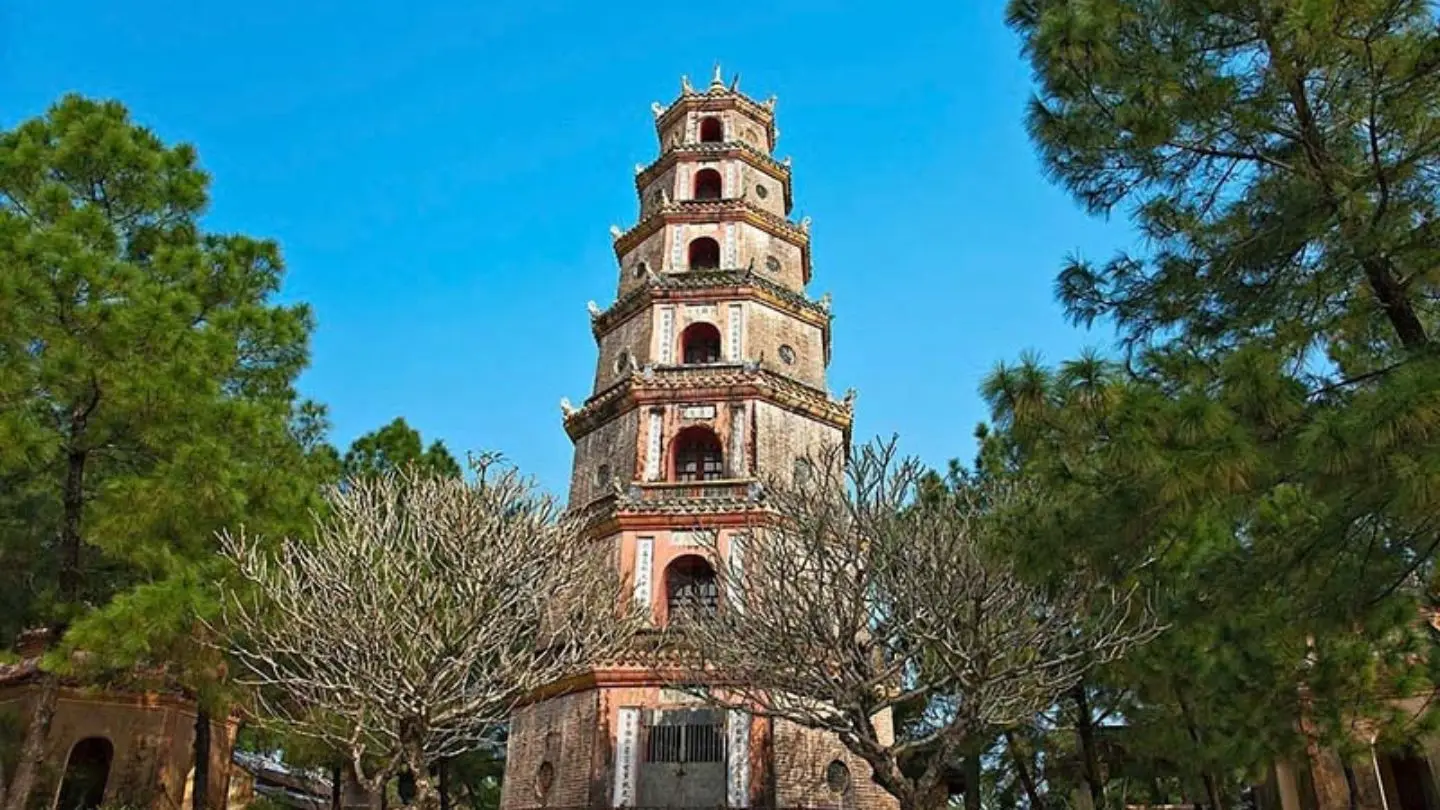
One of the most eye-catching parts of Thien Mu Pagoda is the Phuoc Duyen Tower. It was built in 1844 by King Thieu Tri and has since become a true symbol of Hue. The tower stands tall right after the main gate, and you really can’t miss it. It’s octagonal, made from rustic bricks, and has seven floors, each about 2 meters tall. On every floor, there’s a statue of Buddha, and the higher the tower goes, the smaller each level gets.
Inside, there’s even a spiral staircase that once led up to a golden Buddha statue on the top floor. The whole structure is painted a soft pink, and though time has weathered it a bit, that only adds to its charm. At 21 meters high, it’s actually the tallest stupa in Vietnam — and it’s even mentioned in local folk songs and poems. That’s how deeply it’s tied to the soul of Hue.
2. Dai Hong Chung Bell
Right next to the Phuoc Duyen Tower, you’ll spot the massive Dai Hong Chung bell. It was cast way back in 1710 by Lord Nguyễn Phúc Chu, and it’s seriously impressive – standing about 2.5 meters tall and weighing over 3,200 kilograms. The bell sits under its own little pavilion, and honestly, it’s hard to miss.
People say that when it rang, the sound could be heard from miles away, echoing across Hue. It’s not just big – it’s also one of the finest bronze works from the 18th century. A true mix of art, history, and spiritual beauty all in one spot at Thien Mu Pagoda.
3. Tam Quan Gate
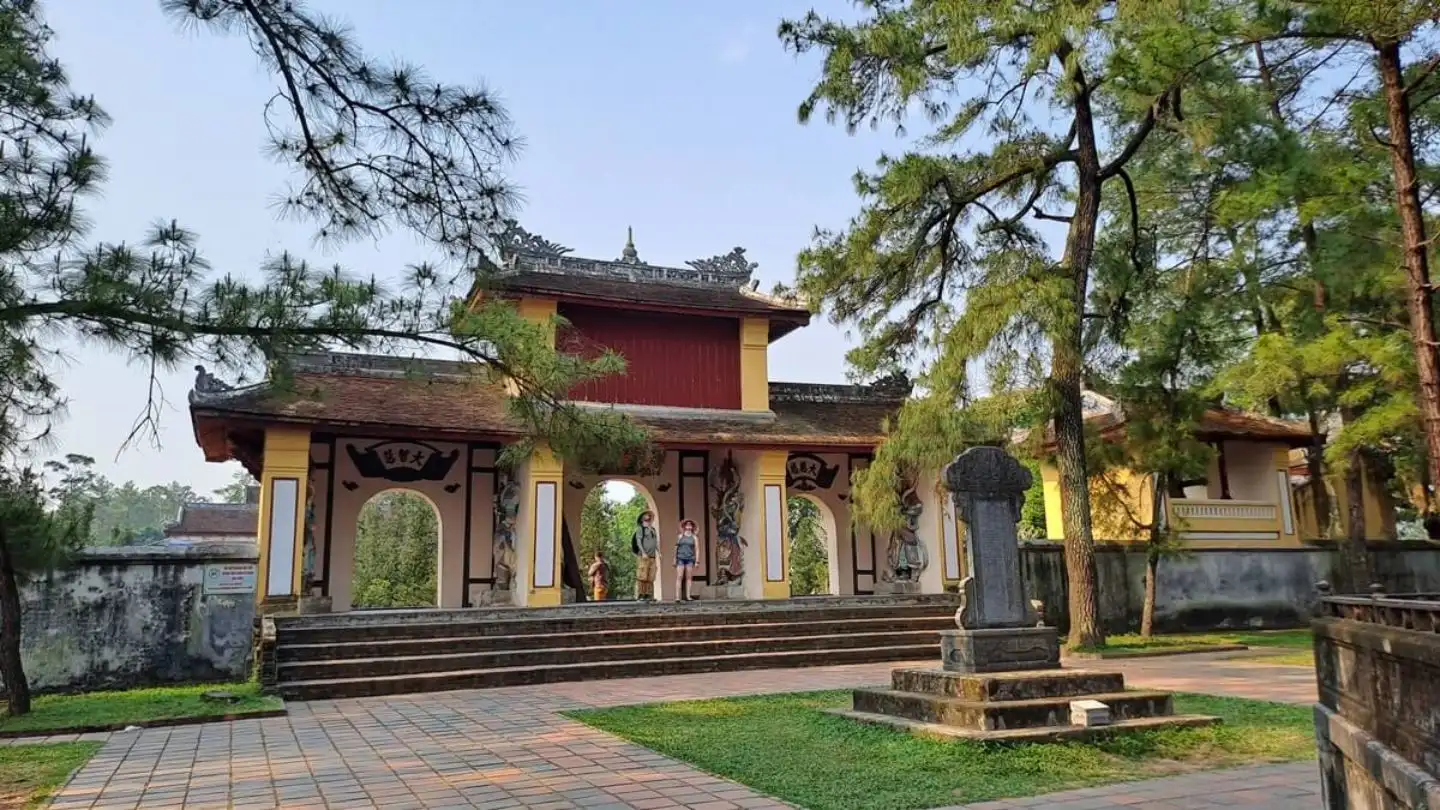
Just behind the Phuoc Duyen Tower lies the elegant Tam Quan Gate, the main entrance that welcomes visitors into the pagoda grounds. It features three doorways, each symbolizing one of the three realms – human, spirit (devil), and divine – and leads into the temple’s sacred space.
The gate is impressive with two levels and eight sweeping roofs, richly decorated with unique carved patterns along the top. On the second floor of the central arch, you’ll find a Buddhist shrine, while standing sentinel at both sides are statues of the Dharma Protector, guarding the entrance with a watchful presence. A stunning blend of symbolism and craftsmanship that sets the tone for your visit.
4. Dai Hung Palace

When you step into the main hall of Thien Mu Pagoda, you’ll find Dai Hung Palace – a peaceful, meaningful space. Right in the center is the statue of Maitreya Buddha, with his big belly, kind smile, and gentle eyes. He’s the symbol of joy, tolerance, and good energy.
The building might be made of concrete, but the wood-like paint makes it feel warm and welcoming. Look around and you’ll spot a wooden plaque from 1974, a lovely bronze bell with sun and moon details, and an altar for the Three Buddhas. And just behind it all? The resting place of Venerable Thich Don Hau, a much-loved monk who once led the pagoda.
5. Dia Tang Palace

Just behind Dai Hung Palace, you’ll come across two smaller but really special places: Dia Tang Palace and Quan The Am Palace. Dia Tang Palace has this gentle, detailed design and sits on a foundation linked to Maitreya. Inside, there’s a beautiful bronze statue of Avalokitesvara Bodhisattva, sitting peacefully on a lotus base.
What’s cool is that on both sides, there are ten guardian gods, making the space feel both protected and powerful. Now, Quan The Am Palace is a bit different. It’s tucked away in a quiet grove, super simple, no fancy carvings – just calm and peaceful. It’s a lovely little hidden spot to pause and breathe.
6. Tomb of Venerable Thich Don Hau
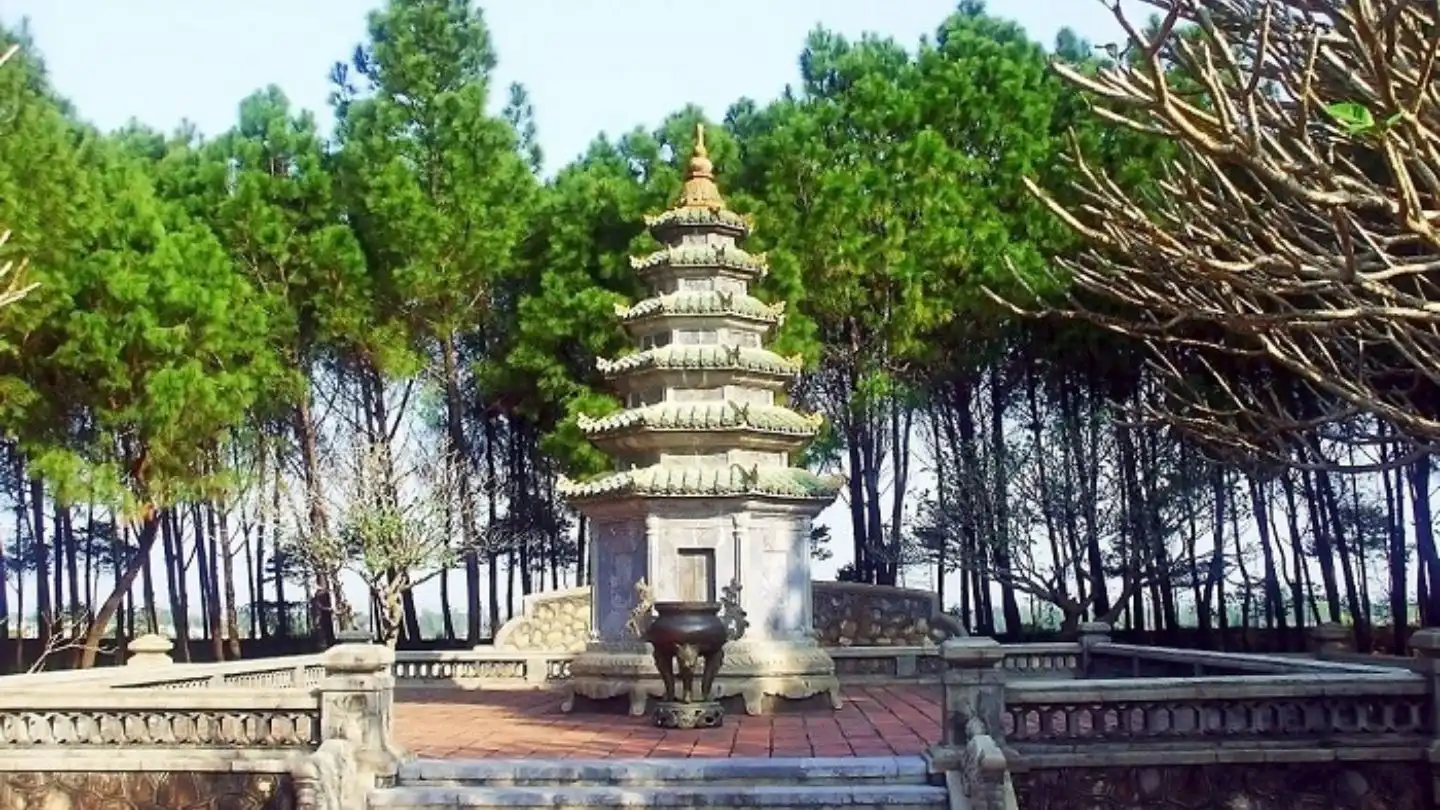
If you walk all the way to the back of Thien Mu Pagoda, you’ll find a quiet, peaceful spot – the tomb of Venerable Thich Don Hau. He wasn’t just an abbot here; he was deeply loved for dedicating his whole life to Buddhism and helping people in need. Locals still remember how kind and humble he was.
So when he passed away, the monks and the community chose to bury him right there, under a tower at the edge of the temple grounds. It was their way of saying thank you – for everything he gave, and everything he stood for. It’s a calm, sacred place that really touches the heart.
7. Austin car
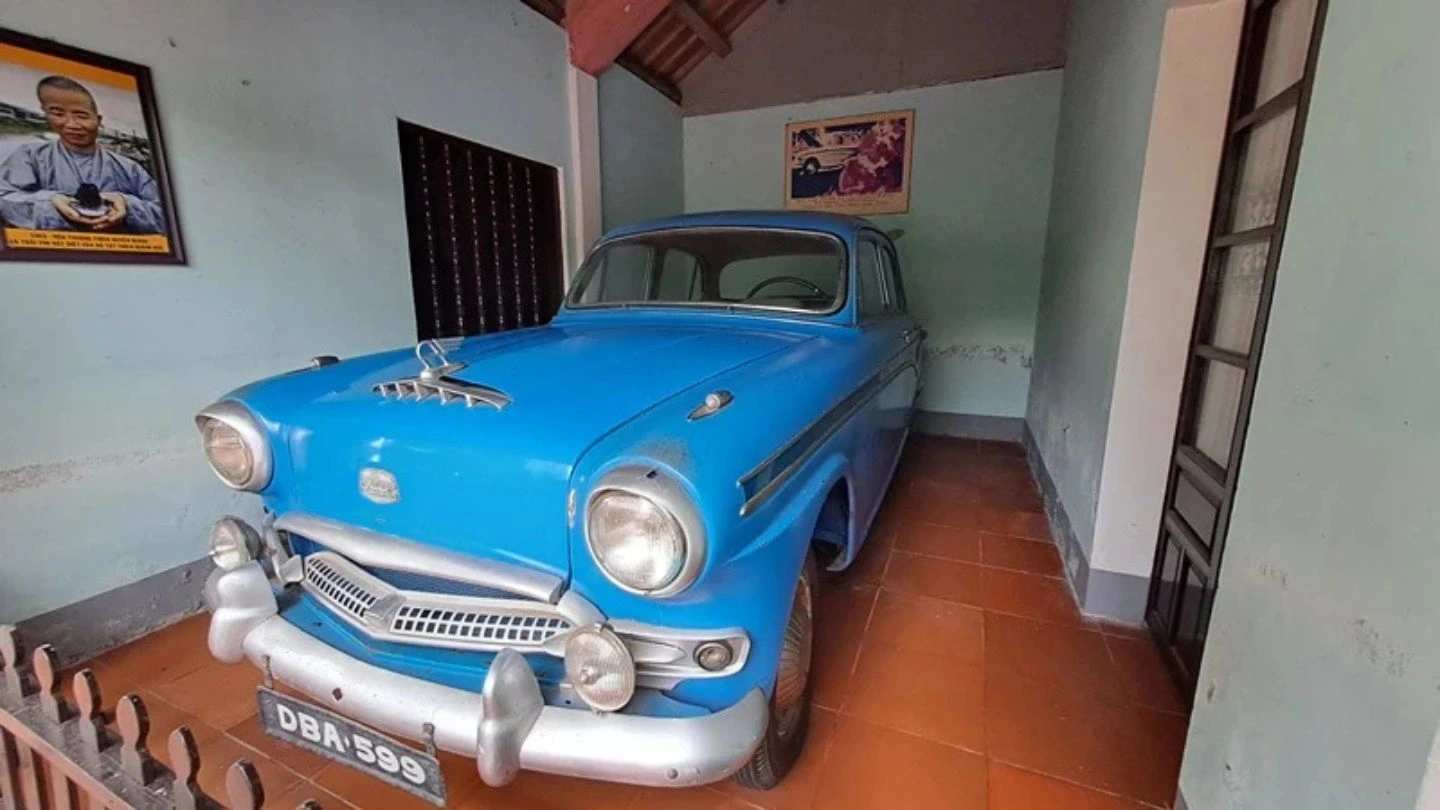
One of the most surprising and moving things you’ll see at Thien Mu Pagoda is an old, pale blue Austin car. It’s not just any car—it once belonged to Venerable Thich Quang Duc, the monk who drove it from Saigon to make a peaceful but powerful protest in 1963. In an act that shocked the world, he calmly sat in lotus position and set himself on fire to speak out against religious discrimination. Today, that very car is displayed at the pagoda.
Tips for Visiting Thien Mu Pagoda
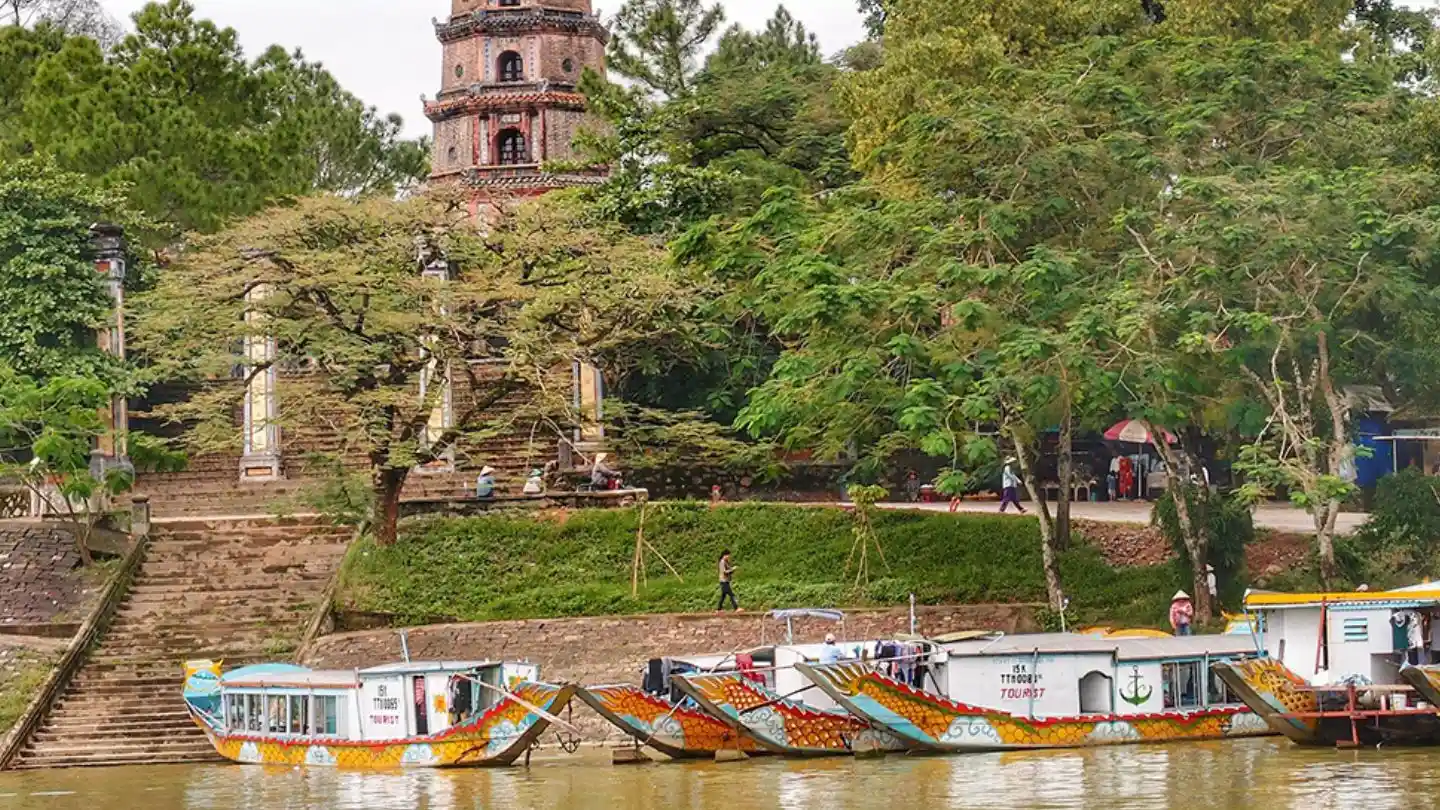
- Wear simple, respectful clothes to show respect at the temple and feel comfortable walking around the large, quiet area.
- Bring water and sunscreen because the weather can get hot, and there’s not much shade around the pagoda grounds.
- Go early in the morning to avoid big crowds, enjoy the peace, and take better photos with soft natural light.
- Be quiet and polite inside the pagoda so everyone can enjoy the peaceful space and learn more about the culture.
- Don’t forget your camera or phone, because the views of the Perfume River and the tower are truly beautiful.
Conclusion
Thien Mu Pagoda is a beautiful and peaceful place. It has a tall, unique tower that looks really special. Many people visit to see the lovely temple and enjoy the quiet surroundings. The view near the river is nice and gives a feeling of calm. Visiting Thien Mu Pagoda is a nice way to learn about history and relax at the same time. It is a special spot that many people remember happily.
FAQs
Is Thien Mu Pagoda worth visiting?
Thien Mu Pagoda is special not just for its beauty, but its legend—locals say a celestial lady once predicted a ruler would build a shrine right on this spot.
Is there a dress code for Hue pagoda?
Remember to dress modestly – no sleeveless tops or shorts. It’s a sacred place, so covering your shoulders and knees is respectful.
How old is Thien Mu Pagoda?
Built in 1601, it has over 420 years of history. This peaceful and beautiful site has become a must-see spot for anyone visiting Hue.


